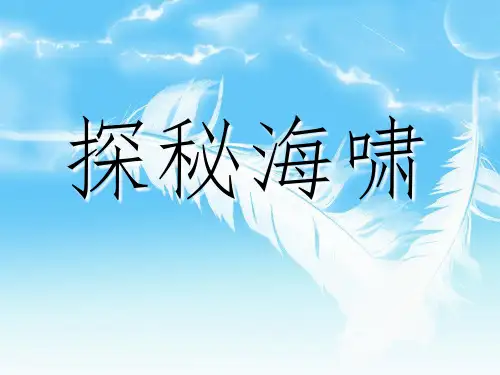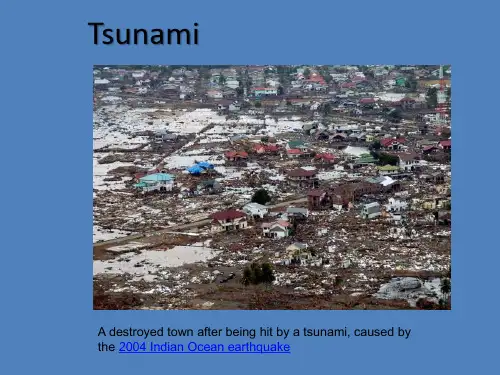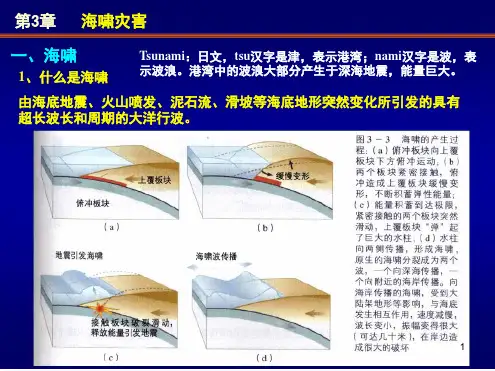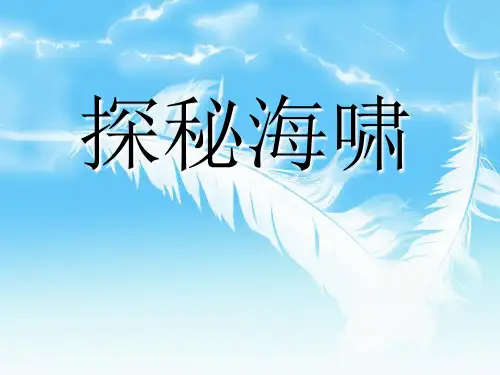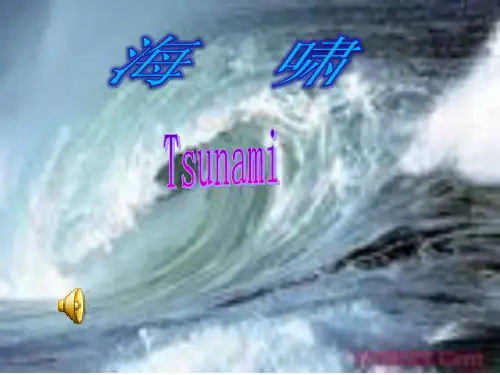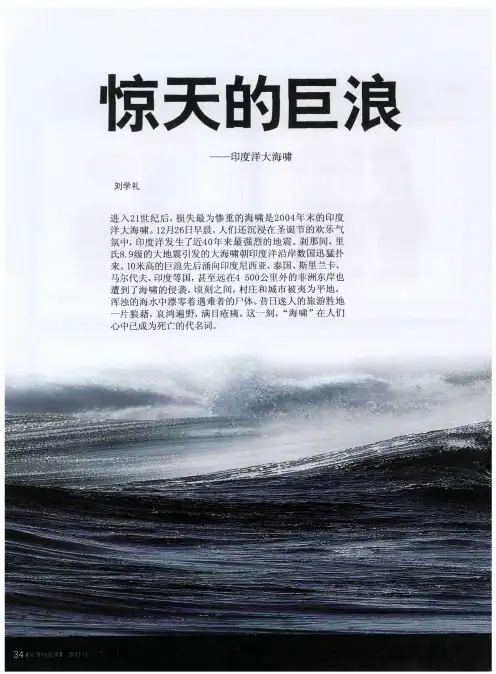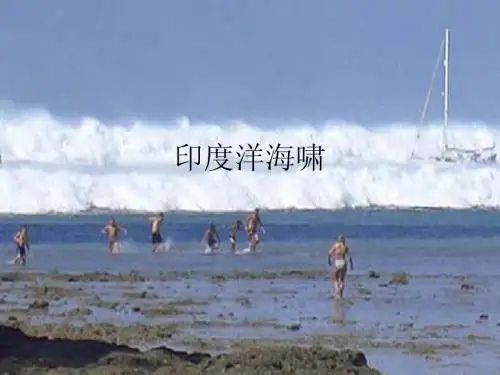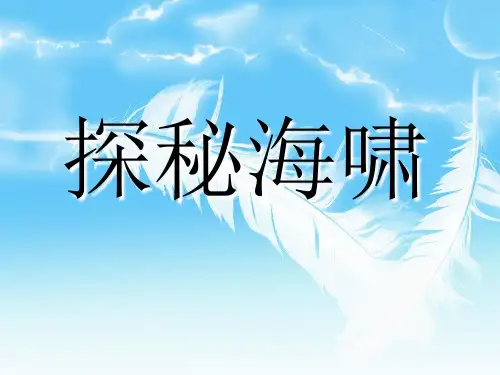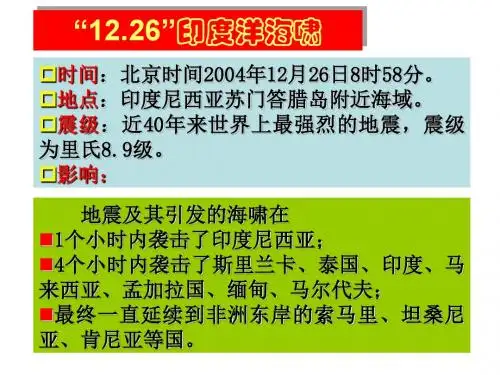Translation:
What does the Japanese word “tsunami” mean? Tsunami is a Japanese word with the English translation, “harbor wave.” Represented by two characters, the top character, “tsu,” means harbor, while the bottom character, “nami,” means “wave.”
Tsunami vs. Wind Wave:
Tsunamis are often no higher than wind-driven beach waves but they are much more dangerous.
Historic tsunamis
• Highest or tallest The tallest tsunami ever recorded so far is the 1958 Lituya Bay megatsunami(立图亚湾巨型海啸), which had a record height of 524 m (1742 troyed town after being hit by a tsunami, caused by the 2004 Indian Ocean earthquake
The Development of a Tsunami:
• A tsunami starts when a huge volume of water is quickly shifted. This rapid movement can happen as the result of an underwater earthquake (when the sea floor quickly moves up or down), a rock slide, a volcanic eruption, or another highenergy event. • Not all earthquakes generate tsunamis. To generate tsunamis, earthquakes must occur underneath or near the ocean, be large and create movements in the sea floor. All oceanic regions of the world can experience tsunamis, but in the Pacific Ocean there is a much more frequent occurrence of large, destructive tsunamis because of the many large earthquakes along the margins of the Pacific Ocean.
